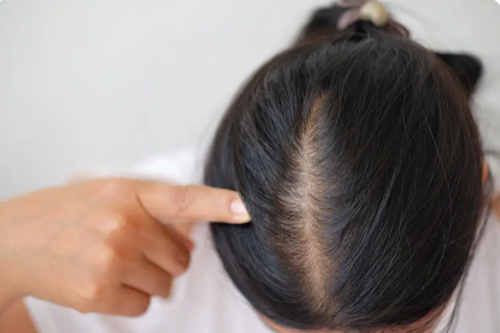
Hair Fall Treatment In Nagpur refers to the various methods and interventions employe to address and manage hair loss. Hair fall, or hair loss, can be cause by a variety of factors, including genetics, hormonal changes, nutritional deficiencies, medical conditions, and environmental factors. The appropriate treatment for hair fall depends on the underlying cause.
Nutritional deficiencies can contribute to hair loss. Supplements containing vitamins (such as biotin and vitamins A, C, and D), minerals (like iron and zinc), and omega-3 fatty acids may be recommende.
Hair fall Symptoms
Increase Hair Shedding:
- Individuals may notice an increase amount of hair in their brushes, combs, or on the shower floor. This is a common early sign of hair loss.
Thinning of Hair:
- Hair thinning, especially around the crown or the top of the head, is a common symptom. The reduction in hair density can be gradual.
Bald Patches:
- Some forms of hair loss, such as alopecia areata, may lead to the development of bald patches on the scalp.
Receding Hairline:
- In cases of male-pattern baldness (androgenetic alopecia), men may notice a receding hairline, especially along the temples.
Widening Part:
- For women, a widening part or overall thinning of hair on the top of the scalp may be noticeable.
Itching or Irritation:
- Conditions like dandruff, seborrheic dermatitis, or other scalp conditions may cause itching and irritation, leading to increase hair loss.
Changes in Hair Texture:
- Hair affecte by certain types of hair loss conditions may become finer, weaker, or more brittle.
Loose Hair at the Root:
- When washing or combing the hair, some individuals may observe hairs that have fallen out with a white bulb at the root. This is often indicative of normal shedding.
Changes in Nail Health:
- In some cases, changes in the nails, such as pitting or ridges, may accompany certain forms of hair loss, like alopecia areata.
Scalp Conditions:
- Conditions like psoriasis or fungal infections may contribute to hair loss, and symptoms such as redness, scaling, or tenderness of the scalp may be present.
Sudden Hair Loss:
- Certain types of hair loss can occur suddenly and result in significant hair shedding over a short period. Book An Appointment for more treatment.
Hair Fall Treatments
Topical Medications:
- Minoxidil: This is an over-the-counter medication that is applied directly to the scalp. It is believe to increase blood flow to the hair follicles and stimulate hair growth.
Prescription Medications:
- Finasteride: This prescription medication is mainly used for treating male-pattern baldness. It works by inhibiting the hormone dihydrotestosterone (DHT), which is associate with hair loss.
Hair Growth Shampoos and Topical Products:
- Some shampoos and topical products contain ingredients like ketoconazole, caffeine, or other growth-promoting substances. While their effectiveness may vary, they are often used as part of a comprehensive treatment plan.
Platelet-Rich Plasma (PRP) Therapy:
- PRP therapy involves drawing a small amount of the patient’s blood, processing it to concentrate the platelets, and then injecting the PRP into the scalp. This is thought to stimulate hair follicles and promote hair growth.
Low-Level Laser Therapy (LLLT):
- LLLT devices use low-level lasers or light-emitting diodes to stimulate hair follicles and improve hair growth. These can be used at home or in specialized clinics.
Hair Transplant Surgery:
- In cases of advanced hair loss, hair transplant surgery may be an option. This involves taking hair follicles from a donor area and transplanting them to the balding or thinning areas.
Lifestyle Changes:
- Adopting a healthy lifestyle, including a balanced diet, regular exercise, and stress management, can contribute to overall well-being and may positively impact hair health.
